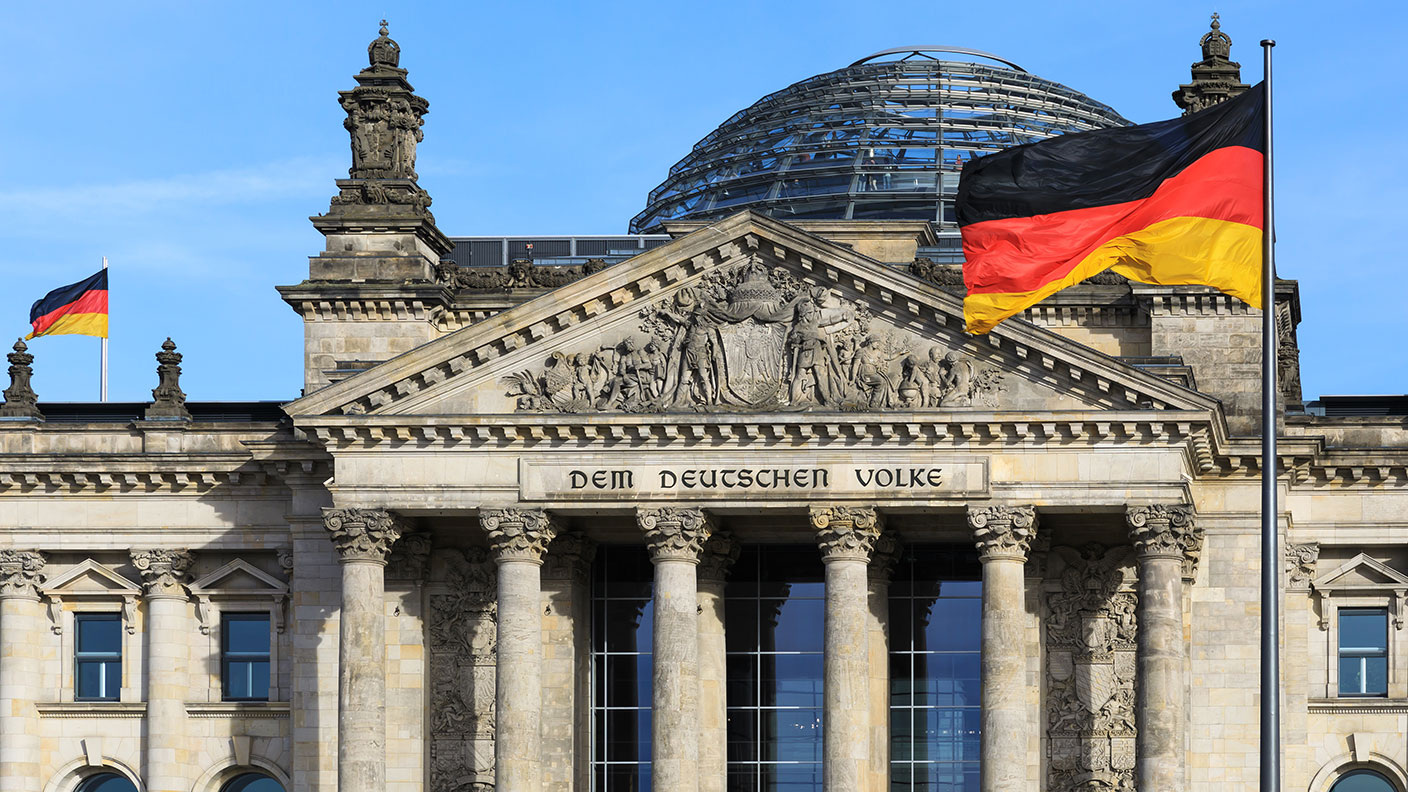Are we nearing the end of the negative bond yield era?
As inflation gets going, the era of the negative bond yield – that investors have to pay governments for the privilege of lending them money – might be coming to a close. John Stepek looks at what it all means.


One of the greatest financial anomalies of the post-2008 era has been the rise of the negative-yielding bond. The idea of a lender paying the borrower, rather than the other way around, seems to turn everything we assume about finance on its head.
Yet with inflation stirring, the era of the negative bond yield might be drawing to a close. And that promises to bring its own headaches. Particularly within the eurozone.
Negative-yielding bonds are still here – but there are a lot fewer of them
Across much of the world, governments have been able to borrow at negative interest rates in recent years (and still are). In other words, investors have been willing to pay governments for the privilege of lending them money.
MoneyWeek
Subscribe to MoneyWeek today and get your first six magazine issues absolutely FREE

Sign up to Money Morning
Don't miss the latest investment and personal finances news, market analysis, plus money-saving tips with our free twice-daily newsletter
Don't miss the latest investment and personal finances news, market analysis, plus money-saving tips with our free twice-daily newsletter
There have been lots of driving forces behind this. One of the most obvious is that central banks have been a constant presence in the global bond market, with the promise that they’ll always be there as the buyer of last resort.
Another has been concerns over deflation –you don’t mind buying a bond on a negative yield today if you think inflation is going to turn negative (ie, prices will fall), because that means you might still make money in “real” terms (ie, after inflation).
Finally, you’ll be happy to buy a negative-yielding bond on a purely speculative basis if you think the yield will become even more negative tomorrow, because that means the price will go up and you’ll have made a short-term capital gain. This is “greater fool” thinking which is a classic sign of a bubble.
Amid global lockdown the negative debt pile only got bigger. Indeed, as recently as December, the volume of negative-yielding debt hit a new record of about $18trn.
However, the era of negative-yielding debt might be nearing its end. Now that concerns about inflation not being entirely transient or under control are finally starting to make their way into the mainstream, buying debt that already costs you money to own, even if inflation is sitting at 0%, doesn’t seem like the brightest idea.
One region where negative-yielding debt has been a very big part of the financial landscape for some time is the eurozone. As Reuters reports, about three-quarters of eurozone sovereign bonds traded with negative yields late last year. By the end of April, that had shrunk to below 60%, and it’s only got lower since.
Most notably, the yield on the German ten-year Bund is rising fast. As the FT points out, ten-year Bund yields “were among the first in the world to fall below 0% in 2016”. Just over a week ago, the ten-year was trading at -0.2%. Yesterday it popped back above -0.1% for the first time in two years. How long before Germany – shock horror! – actually has to pay lenders to borrow money again?
To be clear, this is no bad thing. Negative yields were always a sign that something had gone terribly pear-shaped in the global economy. The idea that we might finally leave this all behind is a sign that we might get a semblance of healthy growth back in the mix (hopefully).
However, negative bond yields have proved quite handy in that they do take a lot of pressure off sovereign debt piles. Germany is not especially indebted (in relative terms). However, as you’d expect, it’s not just German yields that are rising. It’s also the interest rates on the debt of rather more indebted countries, such as Italy.
So what does it all mean?
The politics points to more tolerance of inflation everywhere
We’ve talked about how the Federal Reserve is likely to react to rising interest rates in the US. There’s no certainty, of course. There never is.
But I think it’s reasonable to believe that the Fed will be keen to push back on rising rates, even if it means instituting more radical monetary policy. It has generally paid in the last few decades to bet on the Fed being dovish.
So I’d expect the Fed to maintain the “this is transitory” line right up until it can’t. And then it might emphasise its new inflation framework to justify being more aggressive in holding rates down. The Fed has already said that it now targets a long-run average of 2%, which means it can allow inflation to rise above 2% to make up for all the years it spent below 2% in recent decades. It just needs to make the market believe that it’s entirely serious about this.
So that’s the US. In the eurozone, though, the European Central Bank (ECB) has historically had a much trickier job.
The ECB will want to keep interest rates low (or at least controlled) in order to maintain the sense of calm that has reigned since Mario Draghi managed to put a stop to eurozone break-up fears all those years ago. But Germany tends to be rather more worried about inflation than the rest of its fellow eurozone nations.
That said, some argue that the recent shift in German domestic politics – with the Greens taking the lead ahead of the elections in September – might “point to a more free-spending future”, notes the FT.
On the one hand, that would point to German Bund yields going higher still from here (if you issue more debt, you increase supply). However, it also points to a German leadership and electorate in general being a bit more relaxed about the idea of supportive monetary policy, which in turn points to an ECB that feels less restricted in suppressing interest rates.
In short, politics in both the US and the eurozone suggest that inflationary forces will be given a free rein for the time being at least. There may well be a lag in terms of policy responses – in that the ECB will probably be slower moving than the Fed – but at the same time this will probably be offset by the slower pace of recovery in the eurozone as a whole.
The pace at which each moves might affect the euro-dollar exchange rate – which we’ll look at another time – but the more important point is that the days of negative-yielding bonds may well be numbered.
We’ll be discussing this more in MoneyWeek in future issues. Subscribe now and get your first six issues free here.
Get the latest financial news, insights and expert analysis from our award-winning MoneyWeek team, to help you understand what really matters when it comes to your finances.
John Stepek is a senior reporter at Bloomberg News and a former editor of MoneyWeek magazine. He graduated from Strathclyde University with a degree in psychology in 1996 and has always been fascinated by the gap between the way the market works in theory and the way it works in practice, and by how our deep-rooted instincts work against our best interests as investors.
He started out in journalism by writing articles about the specific business challenges facing family firms. In 2003, he took a job on the finance desk of Teletext, where he spent two years covering the markets and breaking financial news.
His work has been published in Families in Business, Shares magazine, Spear's Magazine, The Sunday Times, and The Spectator among others. He has also appeared as an expert commentator on BBC Radio 4's Today programme, BBC Radio Scotland, Newsnight, Daily Politics and Bloomberg. His first book, on contrarian investing, The Sceptical Investor, was released in March 2019. You can follow John on Twitter at @john_stepek.
-
 Why it’s time to look to the market for retirement savings
Why it’s time to look to the market for retirement savings -
 Two million taxpayers to be hit by £100k tax trap by 2026/27
Two million taxpayers to be hit by £100k tax trap by 2026/27Frozen thresholds mean more people than ever are set to pay an effective income tax rate of 60% as their earnings increase beyond £100,000. We look at why, as well as how you can avoid being caught in the trap.
-
 Halifax: House price slump continues as prices slide for the sixth consecutive month
Halifax: House price slump continues as prices slide for the sixth consecutive monthUK house prices fell again in September as buyers returned, but the slowdown was not as fast as anticipated, latest Halifax data shows. Where are house prices falling the most?
-
 Rents hit a record high - but is the opportunity for buy-to-let investors still strong?
Rents hit a record high - but is the opportunity for buy-to-let investors still strong?UK rent prices have hit a record high with the average hitting over £1,200 a month says Rightmove. Are there still opportunities in buy-to-let?
-
 Pension savers turn to gold investments
Pension savers turn to gold investmentsInvestors are racing to buy gold to protect their pensions from a stock market correction and high inflation, experts say
-
 Where to find the best returns from student accommodation
Where to find the best returns from student accommodationStudent accommodation can be a lucrative investment if you know where to look.
-
 The world’s best bargain stocks
The world’s best bargain stocksSearching for bargain stocks with Alec Cutler of the Orbis Global Balanced Fund, who tells Andrew Van Sickle which sectors are being overlooked.
-
 Revealed: the cheapest cities to own a home in Britain
Revealed: the cheapest cities to own a home in BritainNew research reveals the cheapest cities to own a home, taking account of mortgage payments, utility bills and council tax
-
 UK recession: How to protect your portfolio
UK recession: How to protect your portfolioAs the UK recession is confirmed, we look at ways to protect your wealth.
-
 Buy-to-let returns fall 59% amid higher mortgage rates
Buy-to-let returns fall 59% amid higher mortgage ratesBuy-to-let returns are slumping as the cost of borrowing spirals.
